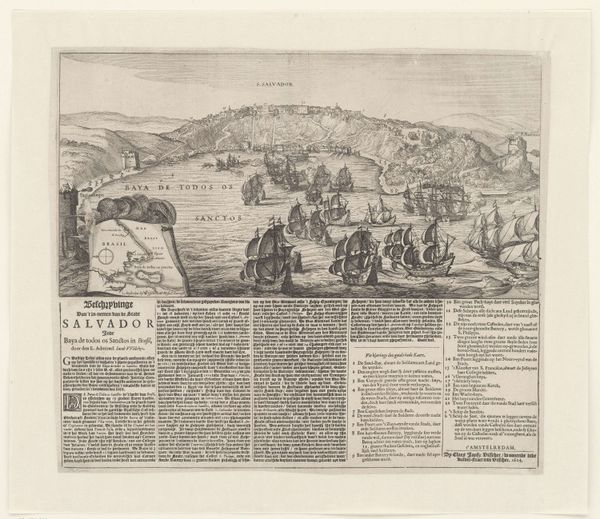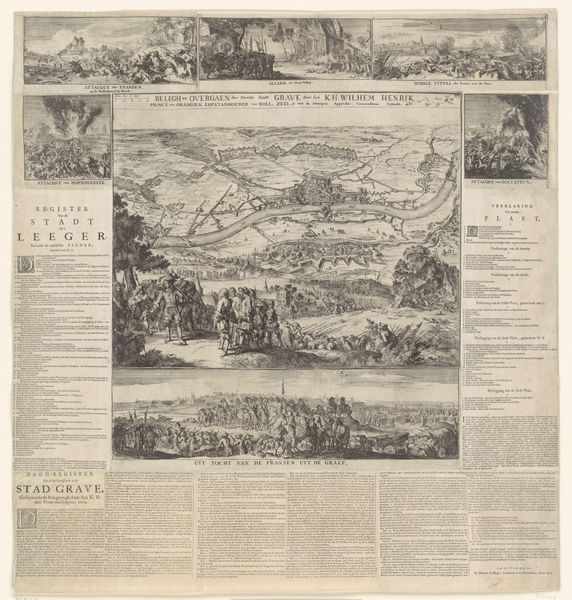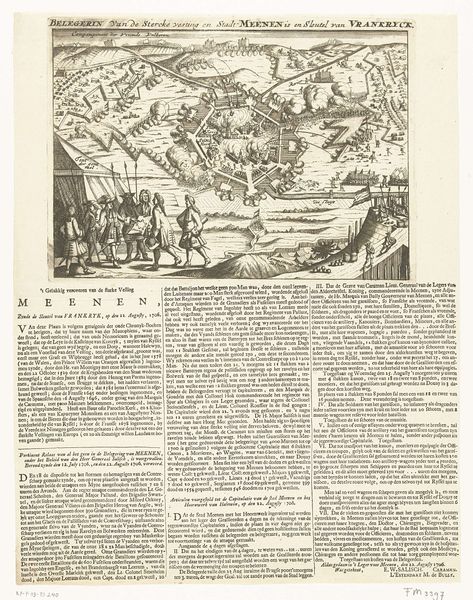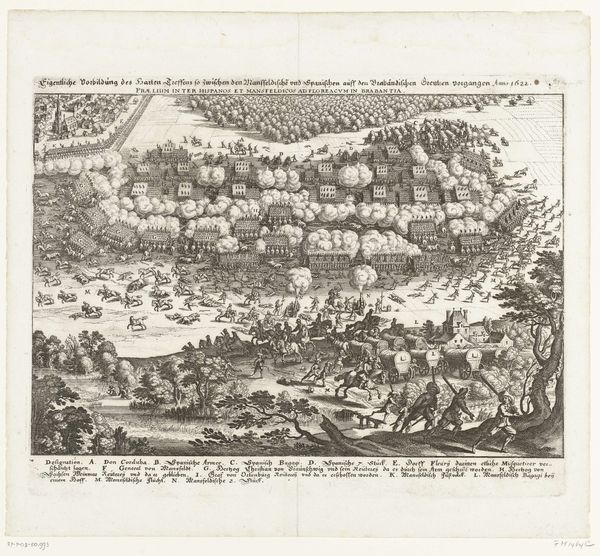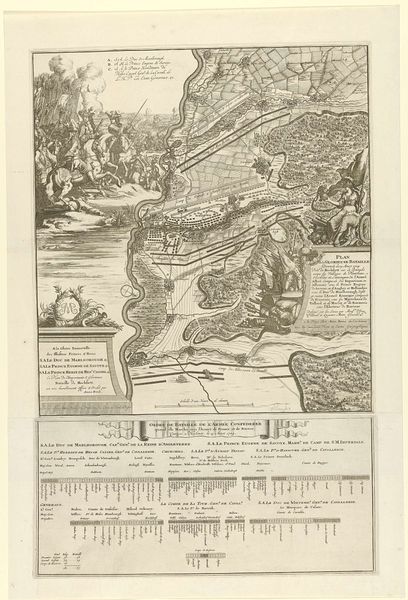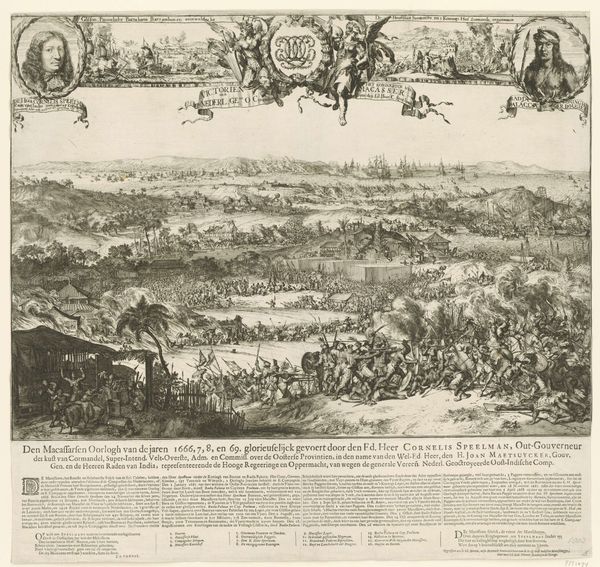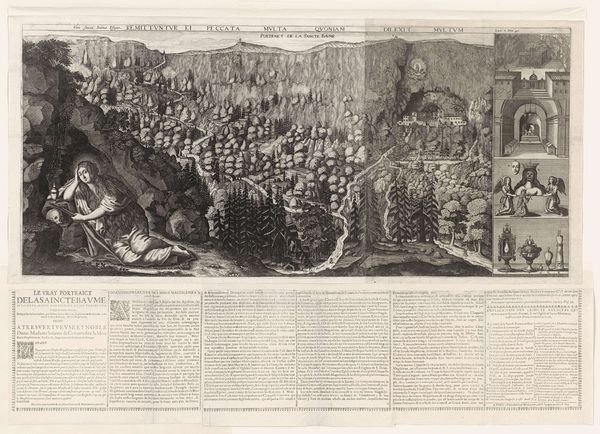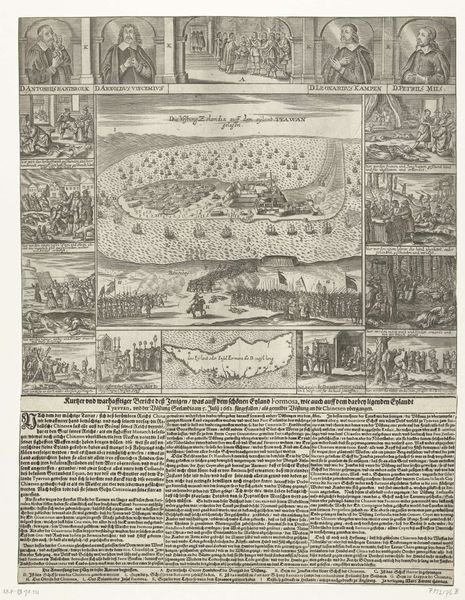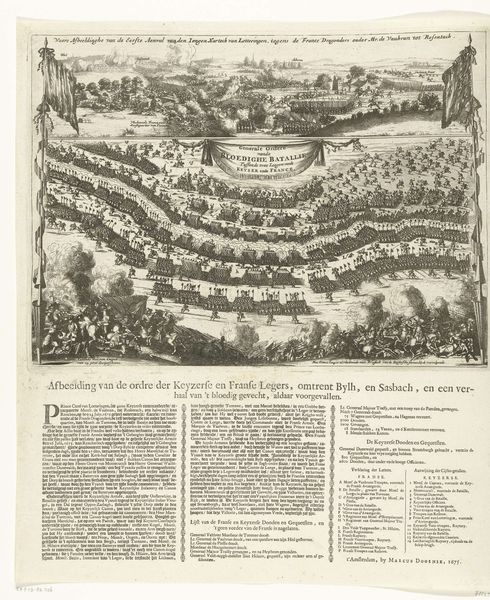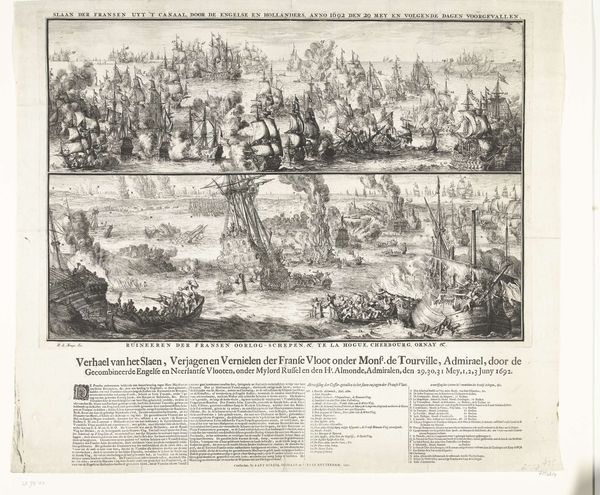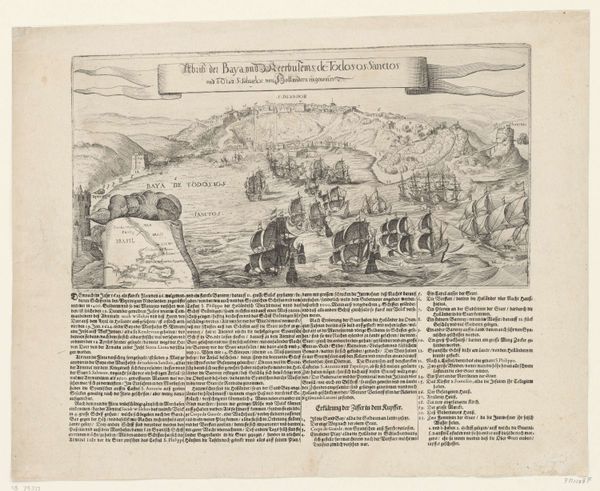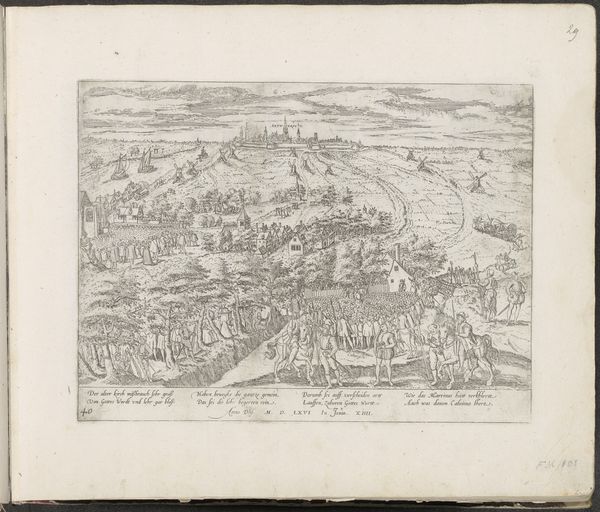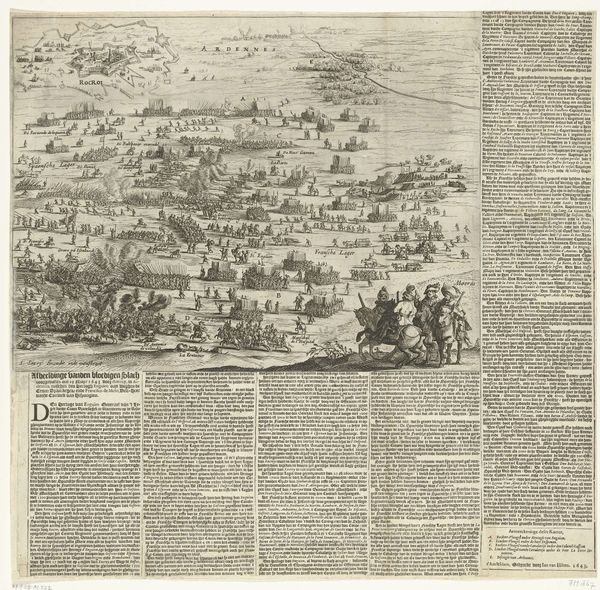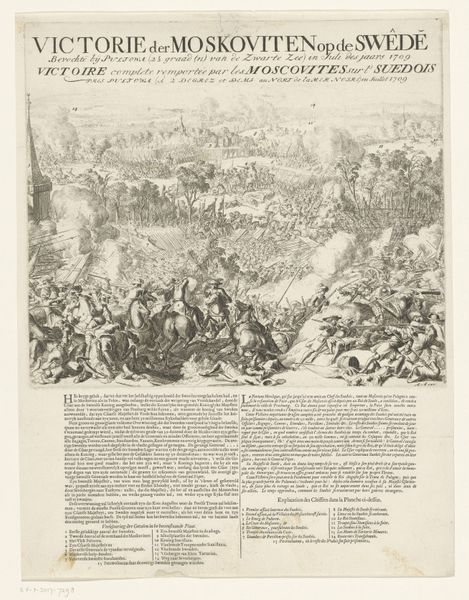
Gevechten tussen Hollanders en Fransen op het eiland Tobago, 1677 1677
0:00
0:00
romeyndehooghe
Rijksmuseum
print, engraving
#
baroque
#
dutch-golden-age
# print
#
old engraving style
#
landscape
#
cityscape
#
history-painting
#
engraving
#
realism
Dimensions: height 411 mm, width 506 mm, height 215 mm, width 522 mm
Copyright: Rijks Museum: Open Domain
Curator: This engraving by Romeyn de Hooghe, created in 1677, depicts the “Gevechten tussen Hollanders en Fransen op het eiland Tobago, 1677,” the battle between the Dutch and the French on the island of Tobago. Editor: It's astonishingly detailed. A dizzying landscape of conflict – chaotic yet precise, almost clinical in its depiction of…conquest, laid bare for all to see. Curator: Indeed, every symbol, from the ships to the palm trees, serves a purpose, a way of embedding meaning into this piece about the clash between European powers. Even the way Tobago is framed within the other maps suggests something about Dutch perception of the New World as ordered space for the taking. Editor: But let's think about the act of making this print. Engraving involves laborious processes: the slow cutting into the metal, the inking, the pressure of the printing press... Consider the material reality—copper, ink, paper, the hand of the engraver. Isn’t this laborious and intricate process a subtle mirroring of the colonial project itself? Extracting value bit by bit, under immense effort. Curator: A compelling reading! One could argue that de Hooghe uses symbols of nationhood here, like flags and fortresses, as an emotional shorthand for viewers, conjuring up feelings of patriotic pride for his Dutch audience—even in the depiction of warfare in a faraway territory. Editor: Flags become commodities themselves! Conquered territories stamped and reprinted in mass productions. The consumption of the image solidifies nationalistic fervor—think about where these prints might have ended up. This isn't just about aesthetic consumption but solidifying cultural attitudes. Curator: It certainly encourages a certain viewing perspective, which speaks to how the image becomes a vehicle for solidifying national identity and collective memory. Editor: Ultimately, this image asks us to question how material culture serves power, reinforcing dominant narratives through its very production and circulation. Curator: An intriguing final consideration. Now I will certainly reflect more about the impact and the intent of distributing such materials.
Comments
No comments
Be the first to comment and join the conversation on the ultimate creative platform.
